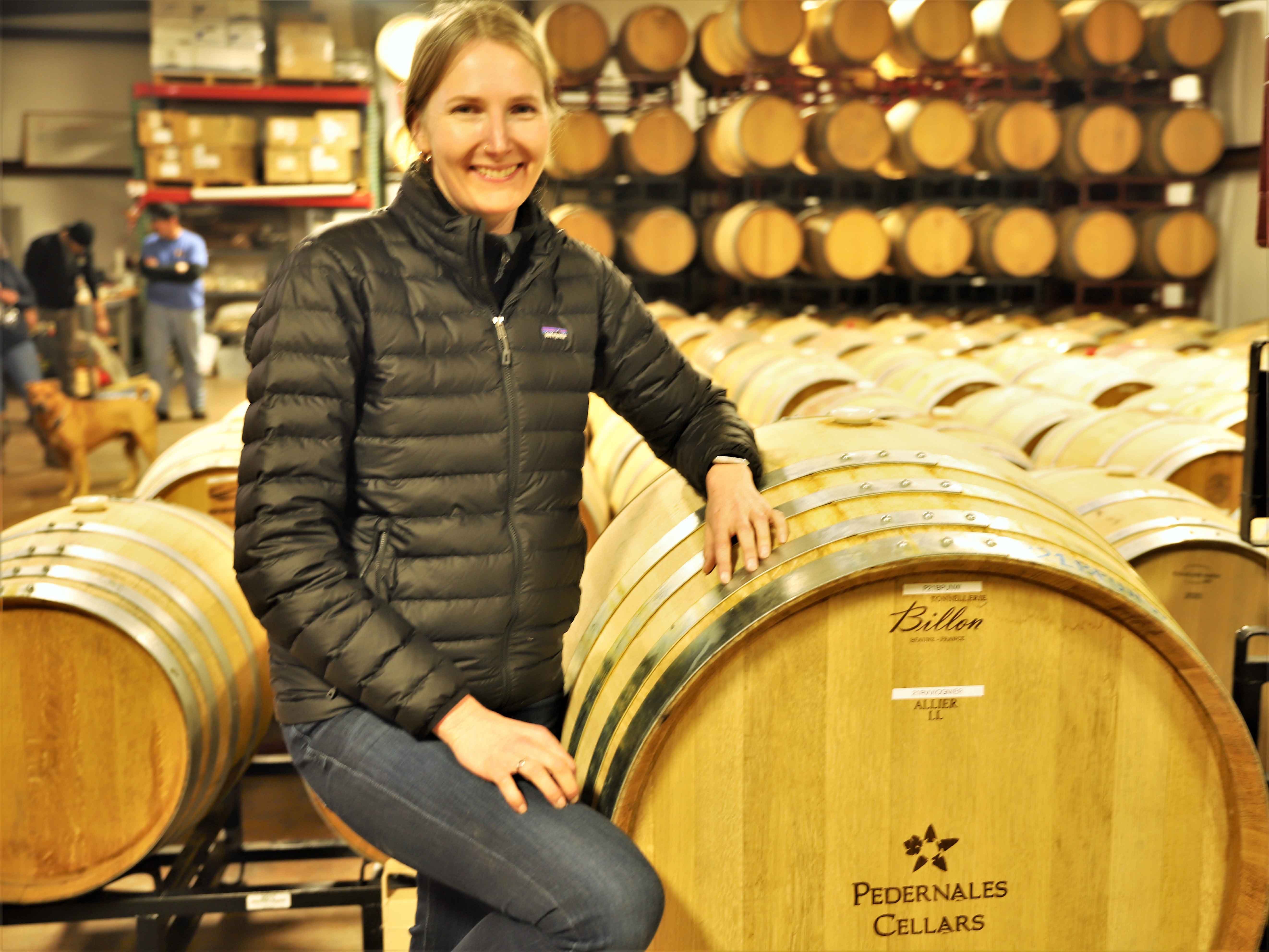Why in the Heck do We Age Wine in a Barrel?
What’s the big deal with barrel-aging wine? Winemakers age wine in barrels for numerous reasons. Some reasons are practical, while others border on mystical. Here are some thoughts on the barrel aging process and how it’s important in making our Pedernales Cellars wines.

Pedernales Cellars Barrel Program
Our barrel program at Pedernales Cellars is ever-evolving, based on our experience and the varietals we are working with any given season. Sure, you could throw any old wine into any old barrel and call it a day, but we have been keenly focused on making the best oak selections for each variety and vineyard. The types of barrels we keep in our rotation for barrel aging make a difference in the way the wine tastes. And that’s why it matters at the end of the day.
Practical vs. Mystical Reasons
The practical reason for barrel aging is that barrels are generally a safe place to store large amounts of wine over time. As long as the barrels are clean, we feel confident that the wine isn’t going to be overly exposed to oxygen or spoilage organisms. As a result, we don’t need to pay a lot of ongoing attention to the barreled wine. We check our barrels once every eight weeks or so. Tanks, on the other hand, need to be monitored a little more regularly to ensure they are tightly sealed or that the headspace is gassed. We check our tanks weekly, at a minimum.
The mystical reasons for barrel aging involve a lot of confusing chemistry and language that even I can’t understand half the time. But the gist is that a number of chemical reactions occur during the aging process. Proteins, tannins, acids, and other compounds react amongst themselves, each other, and with oxygen to alter the structure of the wine. OK, maybe we can call it science rather than mysticism.
One of the most important and obvious effects of barrel aging is the “softening” of a wine. Tannins — the naturally occurring compounds that exist in grape skins, seeds, and stems that give wines their characteristic dryness or astringency — polymerize during aging. This means they are forming longer chains and structures that help in smoothing the texture of the wine and making it more pleasant to drink. At least we hope it becomes more pleasing to the palate after being aged in the right barrel for the right amount of time.
The Effects of Barrel Coopering
Aside from structural changes, different barrels contribute different aromatics and flavor compounds to a wine. American oak is famous for contributing vanilla, coconut, and even dill, while French oak has a more subtle effect and can help boost the fruit profile of wine (generally speaking) while also contributing dark chocolate, and roasted coffee bean flavors. Aside from the origin of the wood, the importance of coopering cannot be understated. Coopering, or the barrel-making process, includes the toasting and seasoning of the barrels where we will age the wine. This process is critical and varies by cooperage or barrel-making company.
A French oak barrel made with wood grown in Allier by one cooper may have a completely different effect on the same wine as an Allier French oak barrel from another cooper. This is why we frequently experiment with different barrels and cooperages as well as types of oak and barrel sizes.
American oak can be sourced from Pennsylvania, Missouri, Minnesota. These American oak barrels can be toasted with fire or convection. They can be toasted lightly, medium, medium-plus, or heavy. The coopers may accomplish these toasts quickly or slow and low. The barrel heads may or may not be toasted. You get the idea. here’s a nearly endless number of combinations. Each barrel is unique.
Experience: The Best Teacher
The factors above are why it is incredibly helpful to have experience working with specific vineyards and varietals over time. It allows us to plan, as much as possible, for what type of barrel might be best matched with what variety. While one vineyard’s Tempranillo might be perfectly ready after 12 months in neutral oak, another block might be better served with 18 months in new French Oak. Winemakers learn through regularly tasting their wines and tracking changes.
Progress can be slow in winemaking. After all, we only have one time a year to experiment on each block, so it’s important to make the most of it and take good notes throughout the process. Ideally, our experience and knowledge of the effects of barrel aging on the specific varieties and blocks we are working with help us perfect the wines.
Your Homework Assignment
Open two different wines side by side and evaluate the flavors. Roll it around in your mouth and see if you can taste subtle differences in the types of flavors that barrel aging can impart. Our 2018 Texas Tempranillo Reserve is aged for 18 months French and American oak. Do you pick up coconut notes? How about chocolate? Compare that to our 2018 Texas Mourvèdre that is aged in stainless steel rather than oak barrels. Do you taste a difference? Not all science is boring.